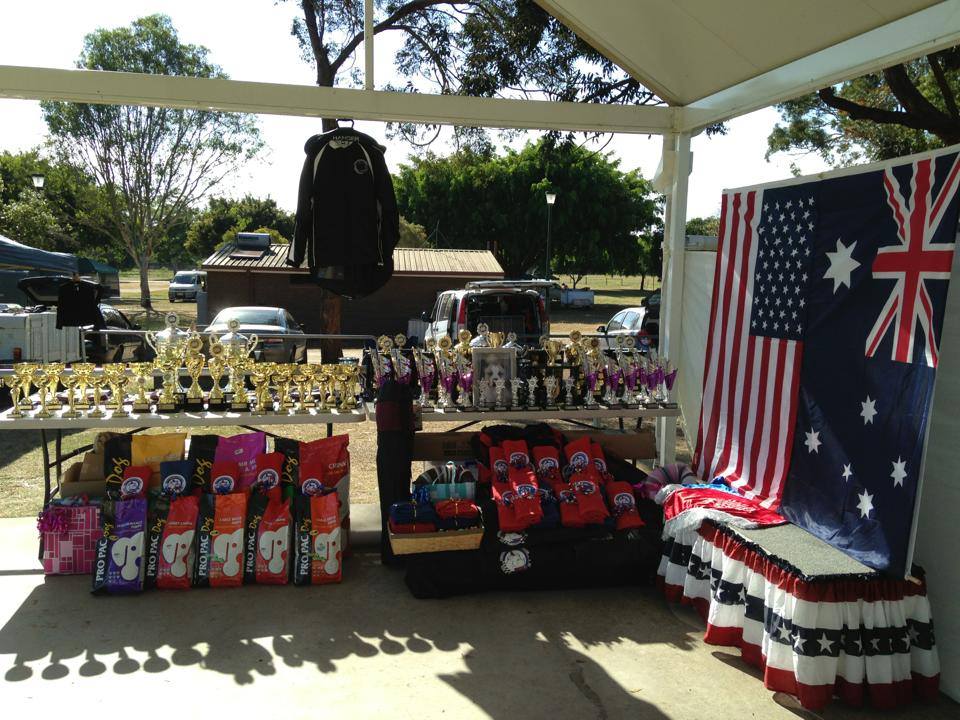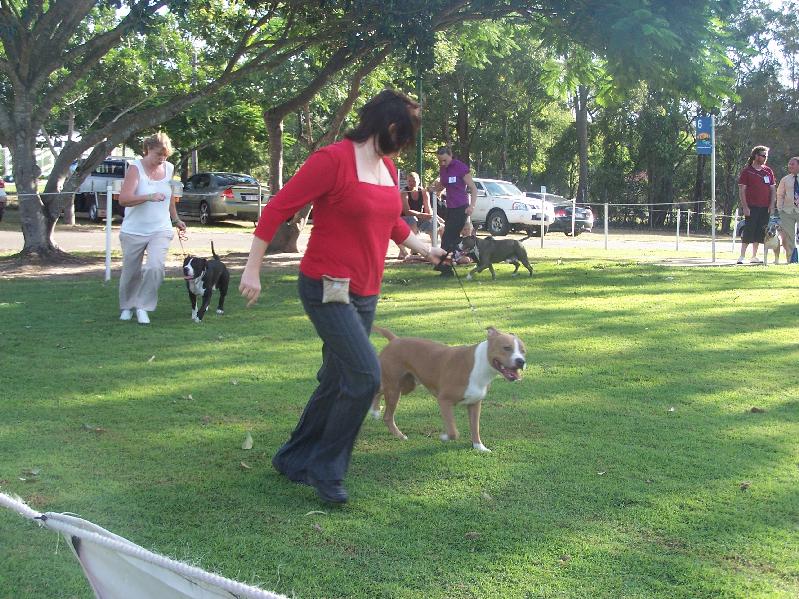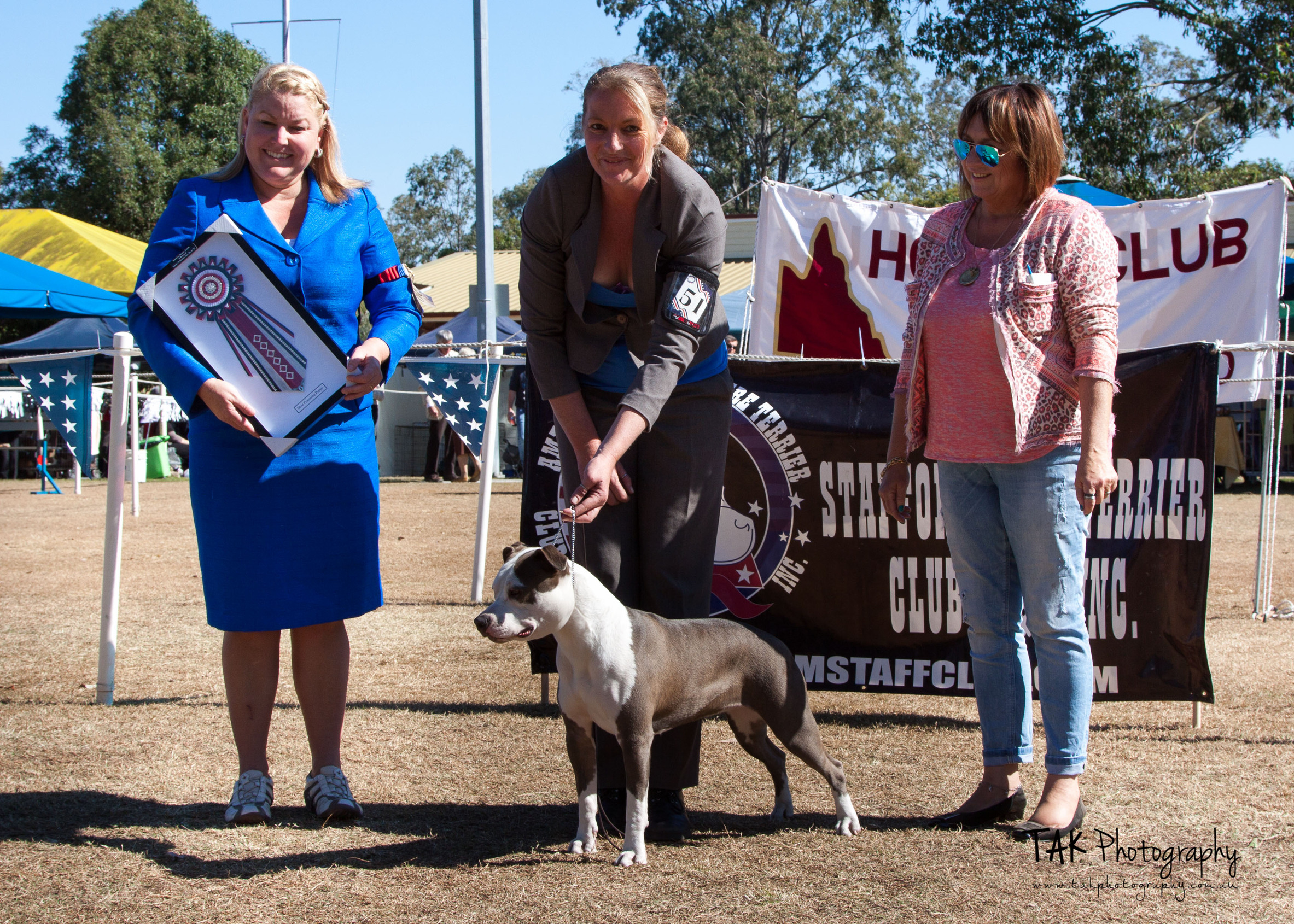Below is a brief outline of how Australian Dog Shows are ran.
A Championship Show is an exhibition of registered dogs at which best of breed and challenge certificates are awarded. A best of breed and challenge certificate evidences the number of points awarded at the fixture towards the title of Australian champion. At these shows only qualified judges officiate.
An Open Show is an exhibition of registered dogs at which no best of breed or challenge points are awarded, but dogs which have been awarded the title of Australian champion may compete. At these shows trainee judges officiate and it is considered the training ground for all young dogs and owners. It is particularly good to help socialise your dog as you may show your puppy from the age of three months.
A parade is defined as the same as an open show except champions cannot compete.
The show schedule provides all the information that the beginner, and indeed the veteran, needs. In addition to the above items, it sets out the names of the judges, entry fees, admission prices, judging times and sequence, catering arrangements and a wealth of other information. Admission to the grounds is generally free.
We strongly recommend that new members join the breed club catering for their particular  breed of dog. The breed clubs often conduct activities which will assist the new member to quickly acquire knowledge and a better understanding of the sport of dogs. Some breed clubs run obedience classes. However, if not, there are many obedience clubs affiliated with the Canine Associations in each State.
breed of dog. The breed clubs often conduct activities which will assist the new member to quickly acquire knowledge and a better understanding of the sport of dogs. Some breed clubs run obedience classes. However, if not, there are many obedience clubs affiliated with the Canine Associations in each State.
 breed of dog. The breed clubs often conduct activities which will assist the new member to quickly acquire knowledge and a better understanding of the sport of dogs. Some breed clubs run obedience classes. However, if not, there are many obedience clubs affiliated with the Canine Associations in each State.
breed of dog. The breed clubs often conduct activities which will assist the new member to quickly acquire knowledge and a better understanding of the sport of dogs. Some breed clubs run obedience classes. However, if not, there are many obedience clubs affiliated with the Canine Associations in each State.Classes
A dog show is divided into several classes which are based on either age of exhibit or prior qualifications. The following are the specifications of classes approved for show fixtures. Please note where separate classes are provided for each sex, the class numbers for bitches are followed by the letter 'a', i.e. Baby Puppy Bitch Class 1a.
Class 1 Baby Puppy - for dogs of three and under six months of age
Class 2 Minor Puppy - for dogs of six and under nine months of age
Class 3 Puppy - for dogs of six and under 12 months of age
Class 4 Junior - for dogs of nine and under 18 months of age
Class 5 Intermediate - for dogs of 18 months and under 36 months of age
Class 6 Novice - for dogs six months of age or over which have not won a first prize at any open show or championship show
Class 7 Graduate - for dogs six months of age or over which have not won a challenge certificate
Class 8 Limit - for dogs over 12 months of age which are not champions or have not gained sufficient points to qualify as a champion
Class 9 State Bred - for dogs six months of age or over whelped (born) in the state in which it is exhibited
Class 10 Australian Bred - for dogs six months of age or over whelped (born) in Australia
Class 11 Open - for dogs six months of age or over
Class 15 Puppy Neuter - for neuter dogs aged six and under 12 months
Class 16 Junior Neuter - for neuter dogs aged nine and under 18 months
Class 17 Intermediate Neuter - for neuter dogs aged 18 and under 36 months
Class 18 Open Neuter - for neuter dogs aged six months or over
Class 15 Puppy Neuter - for neuter dogs aged six and under 12 months
Class 16 Junior Neuter - for neuter dogs aged nine and under 18 months
Class 17 Intermediate Neuter - for neuter dogs aged 18 and under 36 months
Class 18 Open Neuter - for neuter dogs aged six months or over
Class 21 Champion - for all champions entering an open show
Note: Occasionally desexed exhibits sweepstakes are conducted at shows. Age classes are occasionally reviewed and altered by the Australian National Kennel Council and notification printed in the State's Montly Magazines.
 How to enter an exhibit in a dog show
How to enter an exhibit in a dog showWhen you have read the schedule you will note a number of important features of the show are quoted:
-
the date of the fixture
-
the type of fixture, championship show, open show or competition
-
the judge or judges officiating
-
the name and address of the Kennel Club Secretary to whom the entries should be sent
-
the closing date of entry
-
the classes offered for the breeds
-
and many more other matters pertinent to the show
If you are lodging an entry form for your first show we recommend you seek advice and assistance from an experience person, maybe the person from whom you purchased your puppy. Once you decide on the fixture in which you wish to enter, you will need to do the following:
- Complete an official entry form. These may be purchased from the Canine Control office. Entry forms are printed in easy 'cheque book' style with a butt to provide a record of your entry for future reference. Also a booklet of entry forms preprinted with your dog's details may be obtained, for a small charge, and this will save you writing out the same details every time that you enter a show.
- If you have a booklet of blank forms complete the entry form in ink in block letters or in type ensuring all the information entered in the appropriate places is correct. We recommend you copy the information direct from the registration certificate.
- When you have completed filling out the entry form and are satisfied all the details entered therein are correct, place the entry form in an envelope addressed to the show secretary as shown in the schedule along with a remittance (cheque or money order) covering the entry fee and purchase of the show catalogue which comprises a program of all dogs entered in the show under their respective breeds and classes, a standard size stamped, self addressed envelope for return of exhibit number or acknowledgement of receipt of entries and payment of the show catalogue.
- Showmanager is also a accepted form of entry. www.showmanager.com.au
Exhibit number
Within seven to 14 days prior to the date of the fixture you should receive, in the mail, return of your stamped self addressed envelope with your exhibit number, catalogue receipt and a listing of the first number in each group. Most shows require you to collect your numbers and catalogue from their office the morning of the show.
Preparing for the show
As the day of the show approaches you should be preparing your dog by regular grooming and training so that it may be presented to the judge in top show condition and trained to behave correctly in the judging ring.
The best way to ensure your exhibit has an equal opportunity in competition is to present it in the best possible show condition by pursuing a regular grooming and training program every day. The top winning exhibitors will tell you that you win your prizes in the backyard by grooming and training your dog - you only go along to the show to collect them! Diet and exercise also play a large part in presentation of your dog.
Certain breeds require special preparation/trimming and information in this respect can be obtained from your breeder, the appropriate breed club and /or publications on the breed which is available from the most State Canine Control Offices.
On the evening before the day of the show, prepare for your departure by:
- Assessing the travelling time you will require to arrive at the show venue in plenty of time to settle down prior to the judging starting time and particularly allowing time for any unforeseen event which may cause you delay en route
- Pack the grooming gear, the dog's leash, a drink container and any other equipment you may require for preparation and/or comfort of your exhibit
- It is worthwhile to consider also a foldaway chair and a table if you have these items available and any other items for your personal comfort, wet weather gear, beach type umbrella, sun hat, sun block, food, etc., and, of course, water for your dog
-
Don't forget:
- your show ring exhibit number and clip to pin to your jacket or blouse
- the fixture schedule
-
your entry form butt
The day of the show
On the morning of the fixture arise early leaving home at a time which will allow you to travel to the show venue without panic.
On arrival at the show
Attend to your exhibit so that it is comfortable whilst awaiting your call to the judging ring. Under no circumstances leave your dog in your vehicle during hot weather.
Present your catalogue slip to the show secretary's office and on receipt of your catalogue check your entry in the class (or classes) entered and assess the approximate time your breed will be judged by:
1. allowing approximately 40 catalogue exhibit numbers per hour
2. keeping the judging ring in view so that you can see what breed is in the judging ring at any time
Before you bring your dog to the ring, and again when you are waiting to be called in for your class, watch how the judge is going about the task. Almost every judge employs a different technique, how the dogs are paraded, where they stop, which pattern of movement is required, where the dogs that are fancied are placed in the initial stages, how different handling methods are viewed and so on. An astute exhibitor can learn a lot by carefully observing the judge's methods and requirements.
Present your exhibit at the ringside in sufficient time to be able to answer the steward's call.
In the judging ring
Pay attention to the judge's and steward's instructions.
Exhibitors will be required to:
-
Parade their dogs on the left hand side
-
Bring the dog to the judge and stand it to the best advantage
-
Move the dog from and back to the judge as requested
-
control and exhibit the dog to the best advantage during the judging
Exercises
Up and back - With the dog's leash in the left hand all the time, move up to the ring edge directly in front of you. Turn so the dog turns to the left on the inside. Return to the judge and set your dog up.
Correct triangle - Start with the leash in the left hand and move to your right hand top side of the ring. Now move across to the other top side and now return directly to the judge. Set your dog up.
'O' Pattern (for around the ring) Simplest of all. Start with the leash in your left hand move anti-clockwise and finish where you started. Set your dog up.
When you have been judged remain within the precincts of the judging ring until your breed judging is completed.
Once you have more experience and all of this is second nature, don't forget that it was once all new to you and lend a hand to other new exhibitors who may not be as confident.
How does my dog become a champion?
Your dog needs to win a total of 100 points to become a Champion.
Points are awarded at the judges discretion to be best of each sex of each breed (over six months of age) at a championship show, there are also additional points allocated to the best of breed winner.
Challenge points are calculated as follows, five points plus one point for each dog in competition (over six months of age). The maximum points available to any exhibit at any one show is 25 points.
Your dog needs to win a total of 1000 points to become a Grand Champion.
To become a Supreme Champion your dog needs to have 1000 points, including 3 All Breeds Best In Shows; or 10 Best In Groups; or a Speciality Best In Show.
Either 3 Best In Show Judges or 10 Different Best In Group/ Speciality Judges must be submitted, there can be no repeated judges.
Neuter Champion is available under the following rules:
The dog must be registered with a Member Body (eg DogsQLD) as a neuter. The dog must win not fewer than four Neuter Certificates/ Best Neuter of Breed certificates under not fewer than four different judges at four different exhibitions and gain a total of 100 points. twenty five of these points have to be gained after the age of 12months. Points will be allocated the same as a Champion title, however no further points will be awarded for Neuter in Group or Neuter in Show.
Only points accrued as a Neutered dog will be accepted towards the Neutered Champion title.



